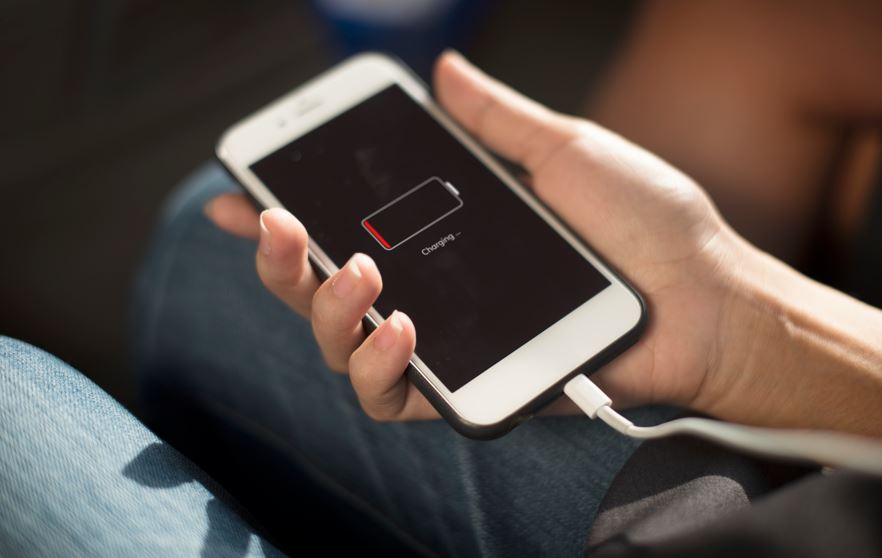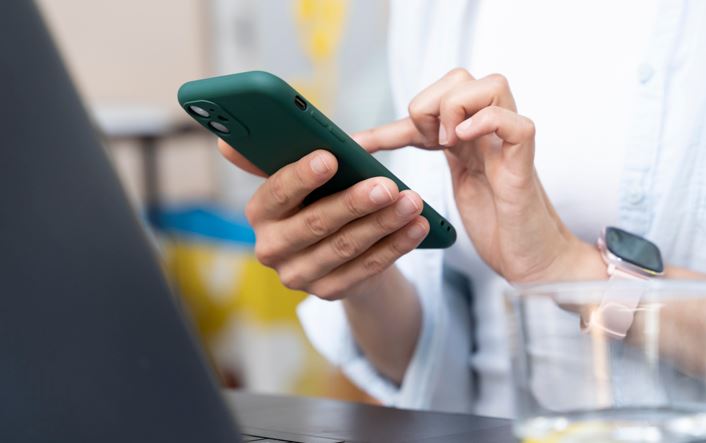Tips for Extending the Battery Life of Your iPhone
20th October 2024
Mike Mapley
Are you fatigued from the frequent need to recharge your iPhone multiple times during the day?
This examination will investigate the importance of battery life for your device and the various factors that can influence it.
We will delve into how elements such as your usage patterns, the operating system, and the applications you utilize can impact the battery life of your iPhone.
Furthermore, practical suggestions regarding monitoring your battery's health and prolonging its longevity will be furnished.
Expect to receive beneficial knowledge on the process of replacing your iPhone's battery and maintaining its optimal performance.
Why is Battery Life Important for Your iPhone?
The endurance of an iPhone's battery plays a vital role in determining the device's performance and usability, directly influencing the duration of usage before requiring recharging. This factor significantly impacts one's productivity and convenience.
A lengthier battery life grants users the flexibility to navigate through their daily activities without the constant concern of locating a power source. Whether engaged in travel, project assignments, or casual web browsing, a dependable battery ensures uninterrupted operation of the iPhone during crucial moments.
The implementation of efficient power management methods, such as adjusting screen brightness, deactivating background app refresh, and activating low power mode, serves to optimize battery consumption and prolong the period between charging intervals. By incorporating these techniques, users can elevate the device's performance levels and overall user satisfaction.
What Factors Affect Your iPhone's Battery Life?
Numerous factors can impact the battery life of an iPhone, including individual usage patterns, charging methods, applied settings, and battery health status. It is essential to comprehend these factors to enhance the battery performance of an iPhone.
For example, personal usage behaviors significantly influence the speed at which an iPhone's battery depletes. Intensive use of applications, video streaming, or gaming can elevate power consumption levels and reduce battery longevity.
Additionally, the charging methodology employed is of paramount importance; frequent utilization of fast charging techniques or prolonged periods of leaving the phone connected to a power source can have adverse effects on battery health. Ensuring the maintenance of optimal battery health through appropriate charging practices and avoidance of extreme temperature conditions will contribute to the prolonged efficiency of the battery.
1. Usage Habits
The battery life of an iPhone is markedly impacted by the user's habits, such as the frequency of device usage, the types of applications utilized, and the duration of screen-on time. Adjusting these habits can lead to a notable extension of the iPhone's battery life.
One critical determinant of battery drainage is the manner in which various apps are utilized on the iPhone. Certain apps tend to consume more battery power than others. Therefore, being mindful of the selection and duration of app usage can have a discernible effect.
The screen-on time is a pivotal factor in battery consumption. Modifying settings like reducing brightness levels or utilizing the auto-brightness feature can aid in conserving battery power. Implementing straightforward strategies such as minimizing background app refresh, deactivating unnecessary notifications, and optimizing settings are effective methods for proficiently managing the iPhone's battery life.
2. Operating System
The operational framework of an iPhone, particularly iOS, is instrumental in overseeing power usage and enhancing battery performance. Consistent software updates and device optimization are imperative to maintain peak battery health for your iPhone.
By ensuring that your iOS is up-to-date, you leverage the latest power management improvements and bug resolutions that can extend the lifespan of your battery. Adjusting device settings such as diminishing screen brightness, deactivating unnecessary background app refresh, and activating Low Power Mode as necessary can aid in conserving battery capacity. Adhering to proper battery care practices, including avoiding extreme temperatures and preventing complete battery drain, can significantly influence the overall durability and effectiveness of your iPhone's battery.
3. Apps and Features
The selection of apps and functionalities utilized on an iPhone plays a pivotal role in determining the device's battery life. Background applications, push notifications, and excessive app engagement can result in heightened power usage and expedited battery depletion. It is imperative to comprehend the manner in which apps interface with the device to effectively manage battery consumption.
Background applications, even when not actively engaged by the user, have the capacity to consume a substantial amount of power. Conserving battery life can be facilitated by actively managing background apps through their closure when not in use. Additionally, optimizing app settings to deactivate superfluous functions such as location tracking or background refresh can contribute to the reduction of power consumption. Moreover, minimizing the frequency of notifications from apps can serve to diminish interruptions and uphold battery efficiency. By cultivating an awareness of personal app usage patterns and undertaking minor adjustments, one can significantly prolong the battery life of an iPhone.
How to Check Your iPhone's Battery Health?
It is imperative to monitor the battery health of your iPhone in order to gain insight into its current condition and performance. By evaluating metrics such as battery usage analysis, monitoring tools, and overall battery status, individuals can effectively assess the health of their device's battery and implement necessary measures to preserve it.
Consistent monitoring of your iPhone's battery is integral in preventing unforeseen shutdowns and ensuring optimal device operation. Familiarity with pivotal battery status indicators, including maximum capacity and peak performance capability, enables users to gauge the overall battery health. Accessing battery information within the Battery section of the iPhone's settings provides comprehensive details regarding usage patterns and identifies the applications that consume the most power. By analyzing this data, informed decisions can be made regarding the optimization of the device's battery life and the preservation of its longevity.
Tips for Extending Your iPhone's Battery Life
To enhance the battery life of the iPhone, it is advisable to consider the implementation of various power-saving strategies and efficient usage practices. Adjusting settings, utilizing battery-saving features, and optimizing device performance are recommended methods to amplify battery efficiency and extend usage duration.
One effective technique to conserve battery power is to reduce the screen brightness. Lowering the display brightness not only diminishes power consumption but also alleviates strain on the eyes. Disabling push notifications for non-essential applications can help in preventing unnecessary battery depletion. Additionally, activating the Low Power Mode when the battery level is low can significantly prolong the battery lifespan.
Furthermore, closing background applications and restricting the usage of Bluetooth and Wi-Fi when not in use are essential measures to effectively manage power consumption.
1. Adjust Your Screen Brightness
One of the most effective methods to preserve the battery life of an iPhone is by regulating the screen brightness. By decreasing the brightness level or activating power-saving modes, substantial reductions in power consumption can be achieved, consequently extending the device's battery life.
When determining the ideal screen brightness level, it is advisable to make adjustments based on the ambient lighting conditions. In well-lit surroundings, a high screen brightness may be excessive and lead to quicker battery drainage. Likewise, setting a shorter screen timeout duration can help prevent unnecessary battery depletion when the screen remains inactive. Through efficient management of screen brightness and screen lock duration, users can optimize their iPhone's battery performance, enabling prolonged usage intervals without the continuous need for recharging.
2. Turn Off Location Services
Disabling unnecessary location services and utilizing features like Airplane Mode when not in use can aid in conserving the battery life of an iPhone. It is imperative to monitor location-related activities and optimize location settings to ensure efficient power management.
By deactivating location services for applications that do not necessitate continuous tracking, such as social media or weather applications, a notable reduction in battery drainage can be achieved. Implementing Airplane Mode in scenarios with limited or absent network coverage can prevent the device from incessantly seeking a signal, a significant contributor to power consumption.
To effectively manage location settings, navigate to 'Settings' -> 'Privacy' -> 'Location Services' on the iPhone to customize which applications are granted access to location data. Regularly reviewing the applications utilizing location services in the background can facilitate the identification and deactivation of unnecessary ones, consequently prolonging the battery life of the device.
3. Limit Background App Refresh
Reducing unnecessary power consumption and optimizing battery life on an iPhone can be achieved by managing background app refresh. By monitoring app activity, adjusting refresh settings, and implementing energy-saving strategies, individuals can effectively control background processes and enhance battery efficiency.
A practical method to identify and address battery-draining apps is to monitor power usage through the battery settings on the iPhone. Modifying refresh settings for specific applications, particularly those with infrequent use, can notably alleviate the strain on the battery. Additionally, activating low power mode when the battery is at a critical level and minimizing notifications from less critical apps can contribute to prolonging the device's battery life.
These incremental modifications in app utilization have the potential to significantly impact the preservation of the iPhone's battery performance.
4. Use Low Power Mode
Enabling Low Power Mode on an iPhone can effectively prolong battery life by diminishing power consumption during critical usage intervals. This functionality is designed to enhance battery performance, optimize energy efficiency, and contribute to maintaining the overall health of the device's battery.
Upon activation of Low Power Mode, the iPhone automatically modifies settings, such as reducing background app refresh rates, minimizing visual effects, and potentially dimming the screen brightness to conserve power. This mode plays a crucial role in optimizing charge cycles and promoting battery longevity, offering significant benefits when there is a need to extend battery performance. The energy-saving mechanisms embedded in Low Power Mode can yield favorable outcomes for battery efficiency and usage patterns, enabling users to maximize their device's power capabilities throughout the day.
5. Avoid Extreme Temperatures
It is important to consider the impact of extreme temperatures on the health and performance of an iPhone battery. To ensure optimal battery safety and longevity, it is recommended to avoid exposing the device to conditions of excessive heat or cold. Extreme temperatures have the potential to significantly affect the lifespan and efficiency of the battery.
Elevated temperatures can result in overheating, which accelerates the degradation of the battery and diminishes its overall capacity. Conversely, extremely cold temperatures can cause a temporary reduction in battery life and performance until the device reaches a more favorable temperature.
Maintaining the iPhone within the suggested temperature range of 16°C to 22°C (62°F to 72°F) is advisable to safeguard the battery and uphold its operational efficiency over time. It is essential to refrain from leaving the device exposed to direct sunlight or proximity to heat sources, as this can lead to battery damage and impact its long-term functionality.
6. Keep Your iPhone Updated
It is imperative to regularly update the software on your iPhone to optimize device performance, improve battery efficiency, and address any potential issues that may impact battery life. Keeping your device up to date ensures that you can take advantage of the latest optimizations and enhancements.
Software updates frequently include security patches that are crucial for safeguarding your data and privacy against potential threats. Remaining up to date with software versions not only guarantees a more seamless user experience but also prolongs the overall lifespan of your device.
To check for available updates, access Settings > General > Software Update on your iPhone. From this location, you can conveniently download and install any pending updates, ensuring that your device operates efficiently and maximizes battery longevity.
7. Use Battery Saving Apps
The implementation of battery-saving applications can be a useful strategy for extending the battery life of an iPhone by incorporating additional power-saving features and techniques. These applications provide a range of functionalities, including monitoring battery usage, optimizing power settings, and offering insights into energy-saving strategies.
When utilizing these applications, users can effectively identify which specific applications are consuming the highest levels of battery power and can take appropriate measures to mitigate their impact on the device. Users are also able to adjust settings such as screen brightness, background app refresh, and location services to conserve energy.
Additionally, these applications provide real-time monitoring of battery performance, enabling users to track usage patterns and make informed decisions to optimize battery life.
How to Replace Your iPhone's Battery?
When the need arises to replace the battery of an iPhone, individuals are faced with a decision between executing a do-it-yourself (DIY) battery replacement or availing professional services for battery replacement. It is imperative to comprehend the process and factors involved to uphold the performance of the device.
The DIY approach to battery replacement encompasses the procurement of a replacement battery kit from online sources, meticulously adhering to detailed instructional guides or video tutorials to dismantle the iPhone, and independently replacing the battery. Alternatively, engaging professional battery replacement services ensures adeptness and accuracy in handling the intricate components of the device. Factors such as convenience, cost, technical proficiency, and warranty coverage should be taken into account when deliberating between the DIY and professional alternatives.
Practicing proper battery maintenance, undertaking regular upkeep, and promptly addressing any battery-related issues are paramount for optimizing the performance and longevity of the device.
1. DIY Battery Replacement
Opting for a do-it-yourself (DIY) battery replacement for an iPhone entails meticulously following a series of step-by-step instructions to safely remove the outdated battery and install a new one. A thorough comprehension of battery technology, charge levels, and device health is imperative to execute a successful DIY replacement.
Before commencing the replacement procedure, it is paramount to ensure the availability of requisite tools such as a precision screwdriver set, adhesive strips, and a spudger. Safety considerations should take precedence, necessitating the powering off of the iPhone and disconnection of all cables. Taking note of the battery charge levels before initiating the replacement is advised, as working with a depleted battery is considered safer. It is crucial to recognize that improper handling may result in damage or personal injury; therefore, exercising caution is imperative.
While DIY battery replacements present both economic savings and convenience, meticulous adherence to all guidelines is essential to mitigate any potential mishaps.
2. Professional Battery Replacement
When seeking a professional battery replacement service, one can rely on skilled technicians who are proficient in evaluating the health of an iPhone's battery, executing the replacement procedure, and ensuring the optimal functioning of the device. Professional replacements provide comprehensive solutions and expertise in addressing battery-related issues.
The assessment conducted by experts guarantees the implementation of the correct battery replacement solution, customized to the specific device model and usage patterns. The replacement procedure is carried out meticulously, adhering to manufacturer guidelines and industry standards to minimize the risk of any damage to the device during the replacement process. These professionals possess extensive knowledge of battery technology trends and advancements, allowing them to suggest the most suitable battery type for improved performance and longevity.
Engaging a reputable professional service ensures thorough battery monitoring, regular evaluations of device health, and personalized recommendations to optimize the iPhone's battery life and overall performance. When choosing a service provider, factors such as their experience, certifications, customer feedback, and warranty offerings should be considered to guarantee a successful and enduring battery replacement outcome.















